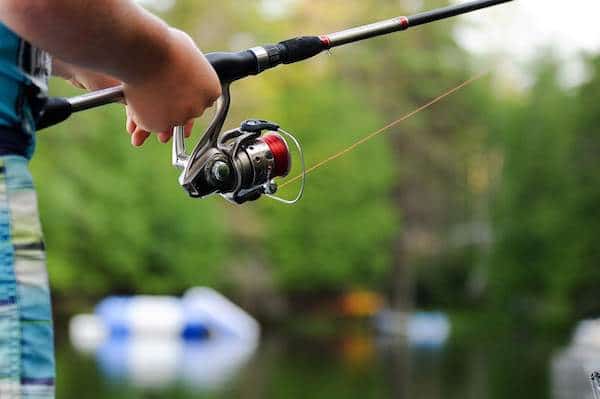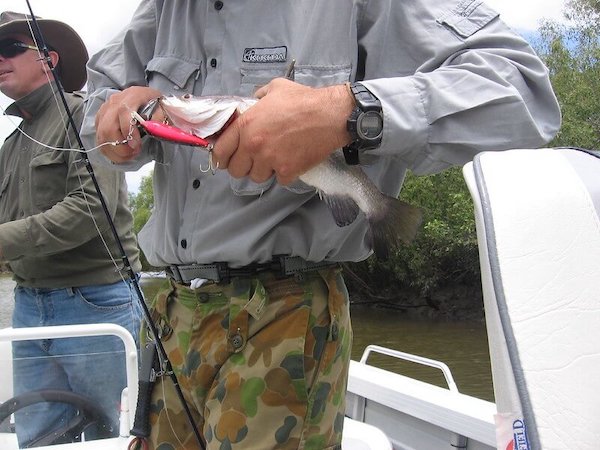6 Tips on catching barramundi successfully
Fishing for barramundi is one of the best experiences for any anglers. Some call it one of the Holy Trinity, while some call it the “IT” fish.
Here’s what usually happens on a fishing trip for one of these bad boys:
As you eye it approaching the bait, you wait with abated breath as it tests it out with its sharp gills to see if it wants to eat it.
The next thing you know, the barra has grabbed a hold of the bait and is swimming away quickly, setting off your reel in fast motion and leaving your grasping your rod.
You know it’s time to battle the fish as you keep your rod tip up. After what seems like an eternity of a fight, you finally net the catch of the day into your boat.
That sounds perfect, but barramundis are pretty elusive animals, on top of their feisty nature, which means they can be hard to catch especially for beginner anglers.
In this post, let me share some of my top tips gleaned from years of fishing these Asian Sea Bass.
Tip 1: Search for a good spot
The work begins before you commence fishing, and finding the right location is critical to your success. But how do you know where is the right spot?
In general, you need to be looking out for logs, where they could be hiding under, snags, sheltered holes and especially at spots where 2 flows of water intersect.
If you didn’t know by now, some of the common places to find them would be in billabongs, estuaries and rivers.
The key thing here is to ambush the ambusher. As the barra stakes out its prey, that is where you are most likely to catch it.
Tip 2: The right timing
Yes, any time you fish, you stand a chance to catch one, but knowing the right timing can make the difference between consistent success and consistent failure.
You will need to do some research about the specific area you are visiting, for example in the Northern Territory in Australia, the wetter months will bring about a greater yield.
A general rule of thumb is to fish during the hotter months, as the fish becomes more active, versus the cold months where it eats less.
Another thing to bear in mind is to fish during run-out tides. You want to have movement in the water, and run-out tides are when ambush predators like the barra are most active.
Tip 3: Use the right bait
As all anglers know, the right bait can sometimes be the make or break of a fishing expedition. It is the exact same thing as trying to catch a barramundi.
Understanding how the barra catches its prey can help you to find higher success.
Why is that so?
You see, barras are ambush predators, which means they lie and wait for their prey to come along. While doing so, they tend to keep their mouths open in anticipation of a prey coming along.
Live baits are highly preferred, and I have had success with quite a wide variety. You can usually count on the following live baits:
- Poddy Mullets
- Small prawns
- Perch
- Minnows
- Cherabin
If you do not have a live bait, you can choose to use a soft plastic lure or a hard metallic one. Ideally, choose a colour that is bright.
Something else you can do is to dump a few slices of bread into the water and wait a few minutes before casting.

Tip 4: Be patient
It goes without saying that you need to be patient while fishing, but what I mean here is to stay in one spot for a long enough period of time.
The thing about barramundis is that they can become lazy after some time, and will likely go for the easy prey, in other words, your bait.
You need to give it some time and to be tempted to bite on, so don’t just give up quickly and look for new fishing spots without giving it a chance.
Tip 5: Keeping the tension
If you have followed the tips so far, you stand a high chance to catch a barra.
Once you get it hooked, you need to maintain tension on the line constantly.
Do not relax and give the fish a chance to escape as it is somewhat an expert at spitting out hooks and lures. Maybe they have evolved to become smarter too?
The truth is, these fishes are tough ballers, and their mouths are thick, which means that sometimes they do not get hooked up easily.
Tip 6: Bring the right equipment
A barra can grow up to 1.8m long and weigh over 20 kilos, but that is extremely rare.
Typically, you will encounter anything from juveniles to adults that weigh up to 20kg and measure 100 cm long.
This means you need the right gear to tackle them.
My suggestion would be as follows:
Brand new no.8 – 10 hooks
Fishing line of break strength 30 pounds minimum
Frequently asked questions
Do barras eat worms?
Yes, they do. They are carnivores and will certainly mop up worms, but that said, worms are probably not their favourite snack and would prefer small prawns and live mullets
Are barramundis aggressive?
Yes, they are territorial and solitary and will definitely give you a good fight. Be careful when bringing them in as they have sharp gills that can cut you.
How to catch a barramundi: Conclusion
Catching a barramundi is an exciting activity, and can become extremely addictive!
Save these tips and be sure to practice them the next time you are out fishing, and if you know of any, do share with me in the comments down below.
Before I go, I would like to point out that there are restrictions on the size of the Barra. It is especially important that catches over 90 cm must be released back into the water, as this is the time when males turn into females.
This is critical for the reproduction cycle of these beautiful beasts, and must be respected.
Have fun catching your first barra, and always watch for crocodiles lurking around too!

